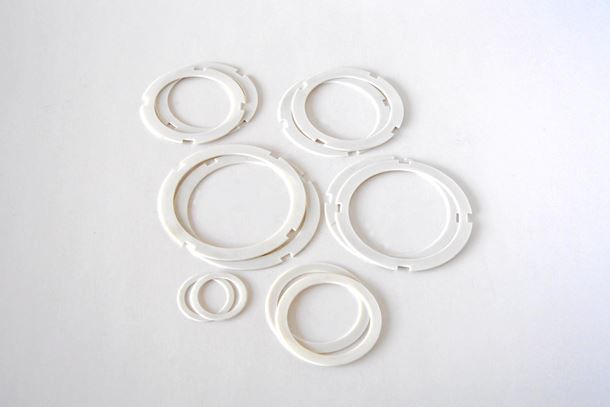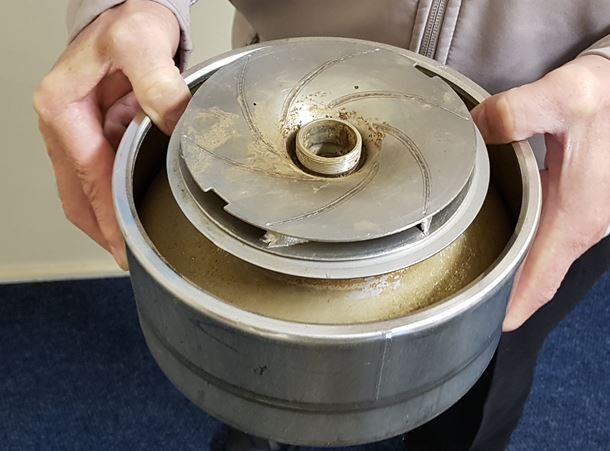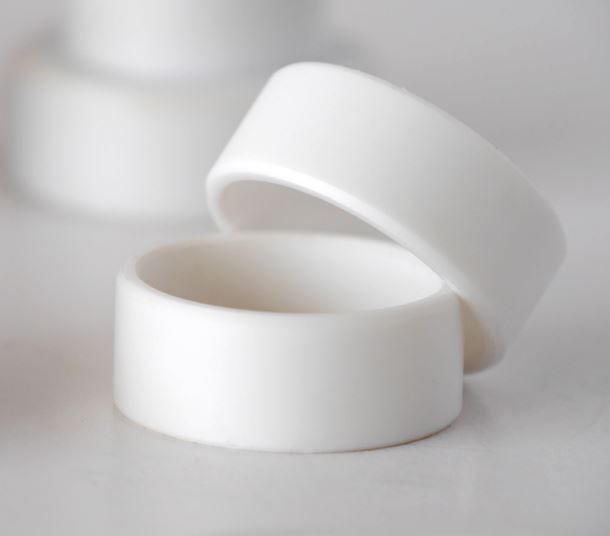How Quality Wear Parts Helped Golf Course Irrigation
Published on by Water Network Research, Official research team of The Water Network in Technology
Keeping a golf course lush is important for any golf course maintenance or irrigation engineer. However, at many South African golf courses, the pump wear parts were consistently failing. One company tested prototype bushings and wear rings, to try to overcome this problem.
Irrigation costs are believed to make up one of the largest portions of the maintenance costs, with the importance of watering, overwatering, the existence of brown patches in the grass, grass thinning or loss of colour consuming much attention.
Since many golf courses are located in water-scarce areas, irrigation can be challenging, especially since golf-course irrigation needs are often pitted against communities’ basic water needs. Capturing storm water; using water from dams and rivers; and re-using effluent and wastewater are all possible alternatives. These are all possible substitutes to using potable water but they sometimes bring their own challenges that original equipment manufacturers may not be considering sufficiently.
Case study
The irrigation company that eventually switched to Vesconite Hilube bowl bushings and wear rings is a well-established provider of irrigation solutions to many of the 532 South African golf courses, of which 400 are under irrigation. Each South African golf course typically has 3 to 16 pumps, although the number of pumps can be as high as 38, as on one elite South African golf course designed by Jack Nicklaus. Each pump typically has four to 12 stages in its multiple-stage canister pumps, which are the type specified by the large golf-course irrigation solution supplier that switched to self-lubricating Vesconite Hilube.
These pumps have to cope with water that is often characterized by high abrasiveness, high alkalinity or high acidity. This is because water-scarcity issues, as well as a national requirement to provide for the country’s basic water needs, have resulted in many of South Africa’s golf courses switching from potable water to water sourced from effluent wastewater; rainfall runoff captured in ponds or reservoirs; streams and ponds; and groundwater.
Impact on wear rings
Prior to the introduction of Vesconite Hilube wear rings, the irrigation company used multiple-stage canister pumps with neck ring casings with phenolic wear rings.
Phenolic wear rings are typically made with a base material such as paper, fibreglass or cotton, which is permeated with a phenolic resin, or phenol formaldehyde resins.
Despite the fact that phenolic wear rings are seen as highly abrasion resistant, they were not nearly wear-resistant enough to cope with the acidity levels and debris found in the storm water run-off and waste water that many South African golf courses are now using in line with global norms.
The paper-like phenolic wear rings delaminated, meaning that repeated stress caused the layers to separate. They tended to only last six to eight months.
The phenolic wear rings reduced pump performance. The pressure suddenly dropped, the client reported, noting the effect of the delamination and degradation of the wear rings, which typically create a virtual contact between a pump’s moving and stationary parts. This stabilizes the pump rotor and to reduce circulation between the pump stages.
The irrigation company approached Vesconite Bearings to produce differently-sized prototype wear rings for each of the pump sizes that it installs on South Africa’s golf courses. These were to be made out of one of its polymers, Vesconite Hilube, a very strong, wear-resistant, low-friction, ultraviolet-stable engineered polymer that is also dimensionally stable in water.
After a year of testing at one golf course, the irrigation company still did not need to replace the wear rings and the wear rings showed no evidence of needing to be replaced. The irrigation company ordered sizeable quantities of wear rings from Vesconite Bearings so that it could install them as standard parts in the pumps that it was installing on South African golf courses.
The polymer wear rings were found to be suitable for the difficult water application, since they did not delaminate even when exposed to mild acids and alkalis or when in contact with abrasive materials. With the introduction of Vesconite Hilube wear rings, the dramatic pumping pressure drops and the frequent wear ring replacements also became a thing of the past.
Bowl bushings
The South African irrigation company also experienced difficulties with the carbon-graphite bowl bushings in the multiple-stage canister pumps before it introduced Vesconite Hilube bowl bushings.
Carbon-graphite is usually regarded as a hard-wearing material, since it includes the wear-resistance, strength and hardness of carbon and the self-lubricating characteristics and corrosion resistance of graphite. However, the abrasiveness of the grit and debris in the water that was being used for irrigation proved too much for the carbon-graphite bowl bushings too. Debris in the water sometimes caused the bushings to wear, with fast-moving fragments sometimes coming into contact with the impeller, damaging or removing vanes, and, in some cases, destroying the pumps.
Fine grit and fine particles also frequently embedded themselves into the carbon-graphite bushings and ate into stainless steel pump shafts. As a consequence, shafts sometimes needed to be replaced, and, where shafts started vibrating due to shaft and bushing wear, the impellers came in contact with the metal chambers. The costs were considerable as canisters or even whole pumps sometimes had to be replaced.
Then the irrigation company introduced Vesconite Hilube bushings for seven canister pump models. The results proved favourable, as a result of the polymer’s wear resistance. Grit did not embed itself in the Vesconite Hilube bushings and lead to subsequent shaft damage and instability that damaged pump components. The irrigation company was satisfied that after one year the bushings did not show significant wear and, importantly, there were no significant expenses related to bowl bushing failure. The company began ordering and stocking the Vesconite Hilube bowl bearings for use on the golf courses that it provides irrigation solutions to.
Reducing costs
Golf courses rely on steady irrigation and are often viewed as undesirable places to play if they have visibly stressed or burnt-out turf. They are also adverse to high maintenance costs including high electricity costs, which may be elevated if a pumping system is not operating optimally. In addition, they are increasingly aware of the labour time and the associated costs involved in making repairs, managing and adjusting the irrigation system and hand watering dry areas where an irrigation system is found to be poor. Therefore, the case for ensuring that an irrigation system’s wear parts are well suited to the application is clear.
Conclusion
Golf turf experts and irrigation companies are convinced that water provision is the biggest long-term issue facing golf courses. Several have even suggested that playing on natural grass may become a thing of the past, as concerns about water availability become paramount.
Irrigation using non-potable water sources is inevitable if the continued use of natural turf is desired. The use of storm water, water from dams and rivers, and effluent and wastewater all present technological challenges that the golf industry continues to address creatively, including in its assessment of the most suitable wear rings and bowl bushings for canister pumps.

Vesconite Hilube wear rings. These were demonstrated to not delaminate even when exposed to water of poor-quality.

One of the canister pumps for which the polymer wear rings and bowl bushings were manufactured.

The bowl bushings that were used in the application.
Source: World Pumps
Media
Taxonomy
- Irrigation
- Technology
- Irrigation & Water Management
- Irrigation and Drainage